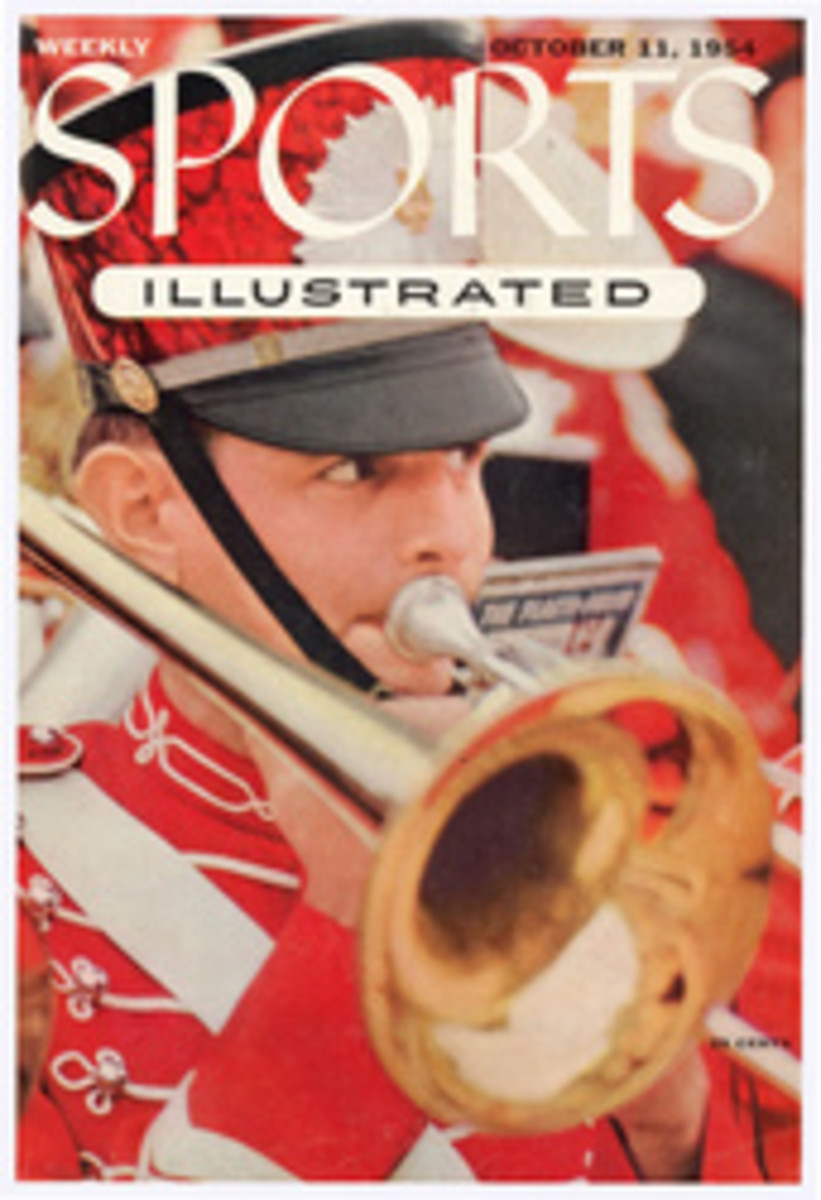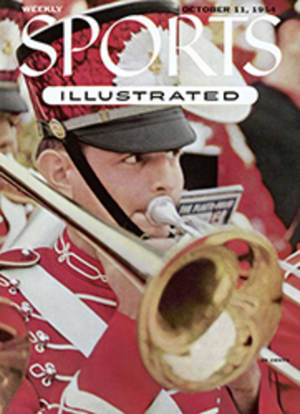
FOOTBALL FOR ALL
Autumn brings a lot of things along with it—the hard-to-forget smell of burning leaves, last year's windbreakers with the mothball hangover, and footballs spiraling through the windy gusts. Probably because not too many people are set up, physically, to play tackle football, a lot of others play a more modern version of the old game known as touch football.
That's a lucky thing, in a way, because any good player or coach will tell you that tackle football, to be played with the chips down, is a rugged grind. On the other hand, touch is a game invented purely for fun. And that's what it is, by the standard barrel.
There was a time, of course, when touch was kissed off by some of the early football diehards as a sort of sissy sport. But no more. That false taint was well erased by none other than the U.S. Army in the early days of World War II. They found that touch was a game which offered the best and the safest way to keep soldiers in trim. They also found that soldiers thought it was a swell game.
The Army wasn't alone in grabbing this corner-lot sport from the teenagers. Colleges took it up as an intramural athletic competition in quite a big way. At Harvard Business School, just a couple of years ago, one of the stars of the intramural league was a fellow named Dick Kazmaier. You may remember his name. He'd been All-American at Princeton the year before. Now, touch was his dish.
There's good reason for the growing popularity of this very safe but very exciting sport. In the first place it gives brittle-boned folk a chance to lug a football without the danger of winding up in the doctor's waiting room. Then too, it can be played by almost any number of people—any age and even any sex, for that matter—from two on a side on up. Not only that, nothing is needed except some old clothes and one inflated football. For touch, you can skip uniforms and protective equipment and chalk-marked fields.
In most corner-lot versions of touch there are very few hard and fast rules. Players tag a runner with a casual slap. They huddle and pull off Old No. 77, with two ends racing pell-mell down the field while the passer heaves one as close to a mile as he can make it. Occasionally they pull off a fancy deal in which hasty blocks are thrown at the guys swarming in, while the runner tries to weave and swivel his way down the field. Nothing has to be learned. Nothing has to be studied. Nothing has to be analyzed. Because this is just a game for the fun of it.
However, when the Army took up touch as a program, they laid out some rules which make it a little more systematic game. They couldn't be called "official" because there's no such thing in touch—it's a happily unofficial type of game. But the Army picked up some of the regulations laid out earlier by the colleges, and the way they wound up, in a loose fashion, the game got a sort of a pattern.
For instance, on the tagging, the Army version says that you should contact the runner with both hands and that you are supposed to make the contact somewhere between the waist and the shoulders. That makes it just a little harder and gives the ball carrier more of a chance against being tagged by accident or somebody just swiping at him as he goes by.
Then, if you go according to the Army book, your big touch has to be made while you've got at least one of your feet on the ground. A flying or diving touch is nixed by them because they claim it would be risky in a game played without a lot of pads and helmets.
On blocking, the big difference between touch and tackle is that in touch you can't use your hands at all—officially, anyway. You have to depend upon your shoulders and body. But outside of that you do the same kind of blocking that they do at Notre Dame or West Point—a straight drive block, a check block or a mousetrap block, otherwise called the part block.
But this is a game that is really a lot more fun if you don't get too technical about things. The wild and woolly forward passes and the dizzy dashes around right end give everybody more sheer kicks than the heavily organized blocking plays. It's just that sort of free-for-all game in which nobody goes home with a broken heart because he lost.
There's another nice point in touch that gives it, actually, more dash than tackle. That is the fact that the runner doesn't need to hug the ball to his chest to prevent a fumble, since he's only going to get tagged—not smashed into—when he's corralled by the enemy. Also, there's a regulation football for touch that is a little bit smaller than the usual one and can be held firmly, forward-pass fashion, even by undersized hands.
It's probably the craziness of the action in a game of touch that makes it such a good one. It can spring up as easily as a conversation and it can keep adding players, piling up scores of fantastic numbers, until the sun slowly starts to sink behind Sam's delicatessen. The topflight touch man is a sort of whirling dervish, twisting and darting like a trout who has just spotted a kingfisher above. But he's got the peace of mind that the trout hasn't—the worst that can happen to him is that he'll get tagged.
SIX ILLUSTRATIONS

